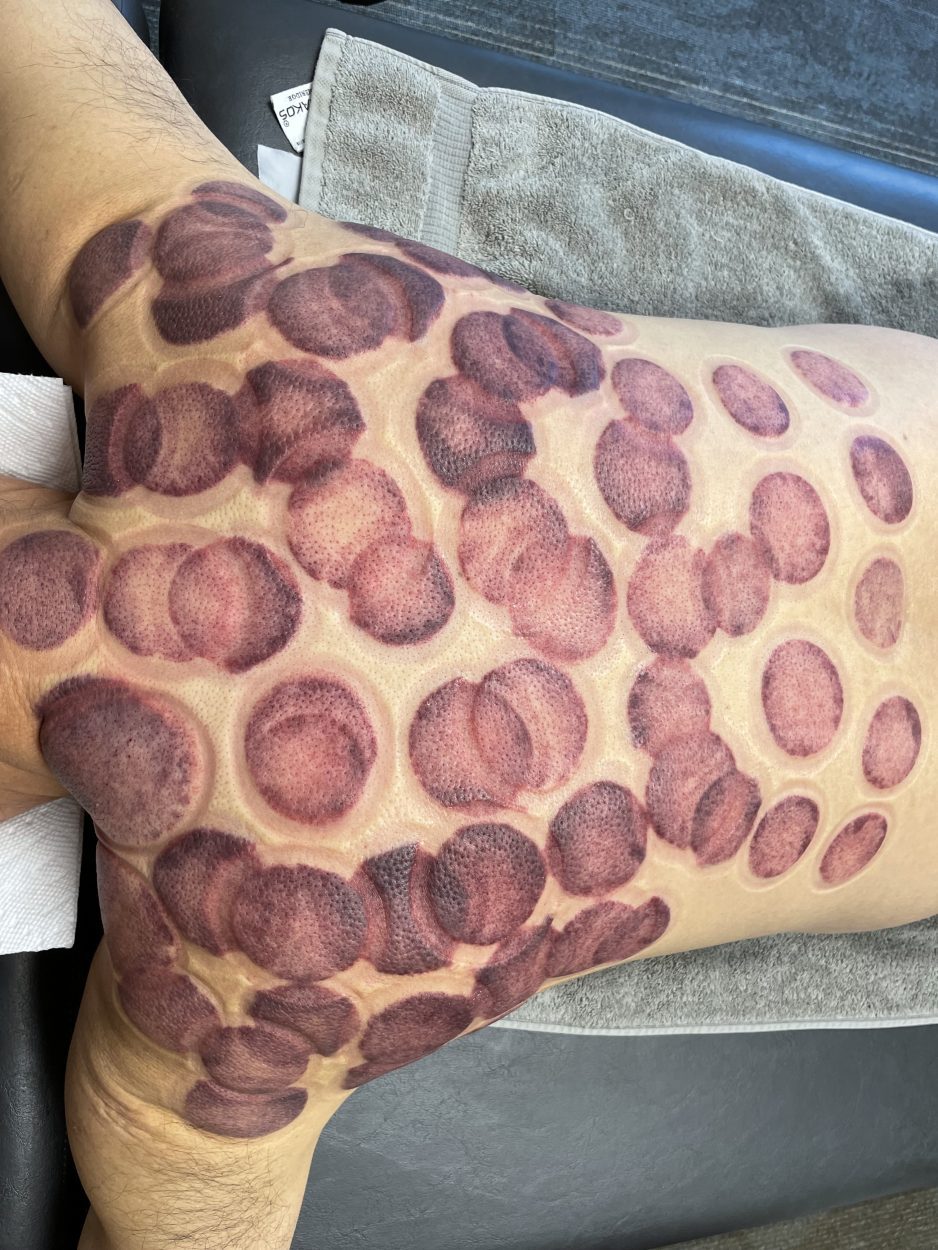Cupping therapy usually leaves a discoloration of the skin caused by bleeding from the ruptured capillaries. In traditional Chinese medicine, different skin discolorations suggest various diagnoses. For example, an intense red cupping mark signifies excess internal heat. Purplish red discoloration means damp heat. Bluish purple cupping marks indicate cold dampness. Cupping marks with an intense dark color usually means significant blood stagnation. Light red discoloration is most frequently seen in healthy patients.
In my clinical experience, many factors, such as the duration and intensity of cupping, contribute to the skin color changes after cupping therapy. Longer duration and stronger suction usually produce darker, more intense ecchymosis and petechiae on the cupping site. Other factors include race, age, sex, types and duration of illnesses, different body parts, and methods of cupping therapy.
In general, the skin color changes are more pronounced on the face and trunk than the extremities. Cupping marks are more intense in the upper extremity than the lower extremity. Cupping therapy leaves a minimal skin discoloration on the palms and plantar surfaces of the feet. Acute and subacute conditions show darker marks than chronic conditions.
The discoloration usually disappears within a few weeks after cupping therapy. Patients who receive more than one cupping session have a shorter duration of cupping marks after each ensuing therapy. Patients undergoing chronic weekly cupping therapy report that their cupping marks disappear within a few days by the tenth treatment session. Quicker disappearance of the skin discoloration generally suggests improved blood circulation, less blood stagnation, and healing of the affected tissue.
Occasionally, patients with chronic conditions at the beginning of treatment may perceive no significant skin color changes due to compromised blood circulation. As treatments progress, these patients exhibit more skin discoloration as their blood circulations improve.
During meridian systemic cupping therapy, the cupping marks can reveal potential internal organ disorders that may reside at a considerable distance from the bruise. For example, very intense skin discoloration over UB 18 suggests an inflammatory condition
of the liver, and similar skin color changes over CV 14 implies an abnormal heart condition.
However, in my clinical observations, cupping discoloration is not always a consistent and reliable parameter in medical diagnosis. More studies are needed to adequately understand cupping therapy marks and their importance in diagnosis and effectiveness of treatment.
